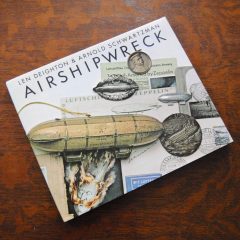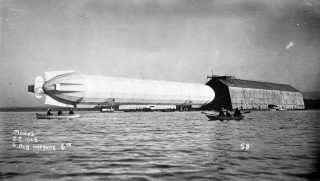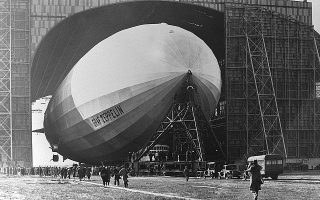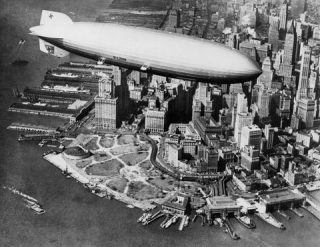
Zeppelins, or rigid airships, are now just a distant memory. While there are still blimps occasionally in the sky over our heads, they are in fact similar but not the same. The airships discussed in this book, Airshipwreck, are what was and at one time they were the future.
For author Len Deighton, who wrote this book, “the airship has a magic that the aeroplane cannot replace. The size is awesome, the shape Gothic, a pointed arch twirled into a tracery of aluminum. And the reality is not disappointing.”
But this book is not so much about the airship itself, as it is about its downfall.
“So where did the dream go wrong? No two experts exactly agree. Certainly time was the airship’s enemy. ‘Airships breed like elephants and aeroplanes like rabbits,’ said C. G. Grey, editor of the Aeroplane, in 1928, rightly predicting that evolution must favour aeroplanes.”
In Deighton’s words, “In this book, with the help of experts, I have told the story of the airship’s failure. It shows the daunting task that the airship designer faced. Perhaps all simple acts of faith bear an imprint of absurdity, and you’ll find it here. But the book is intended as a tribute to the master builders and their aluminium marvels. This generation of engineers dared to build their cathedrals in the sky; no wonder then that so few of them stayed there.”

LZ4
What comes across through the pictures and prose of this short book are that while design improved, the downfall of the airships was in their misuse during wartime, their sometimes comical downfall, and the plain fact that at the end of the day, while they were for a time miles ahead of aeroplanes, they were destined to be surpassed by their heavier-than-air counterparts.
I enjoy that Deighton states that “In flying, as in the other arts and sciences, theorists have always outnumbered practicians.” Because whether it’s the lighter-than-air Zeppelins or planes, or even spaceships, there are always detractors.
But as proof that failures more so than successes sell newspapers, there is the story of the LZ4, which in its failure to achieve its stated 24-hour flight goal, “even newspapers that had not been covering the flight of the LZ4 splashed the story of its destruction. A 24-hour flight would have given the Zeppelin company government finance. Now the 70-year-old Count was penniless and depressed. But the disaster brought gifts of wine, hams, clothes, the contents of money-boxes, legacies and advice. Within one day, money equal to the cost of LZ4 had arrived.”

LZ 127 Graf Zeppelin
However, the bright side of this story is that while there are always detractors, and while the public loves a failure, there are plenty of dreamers among us.
Yet this book is about the wrecks of the airships. And though the concept was proven a success by 1963 with only one leading company, trouble was on the horizon. Airships had had their successful flights “around the world, to the Arctic, Middle East and eastern Europe” in addition to the fact that “the Graf Zeppelin airship had established a regular passenger service between Germany and South America. As 1936 ended, Graf Zeppelin had flown a grand total of 1 million kilometres, 16,000 flying hours in 578 successful flights.”
But the comical mishaps both in the air and on the ground, as well as the failed attempts to weaponize airships, didn’t do nearly the damage that the Hindenburg did one fateful flight.

Hindenburg over New York
While the cause of the Hindenburg is still up for debate, the rise of the airplane and the visual of the burning Zeppelin did, in fact, undo all of those successes so clearly that it was as if they had never happened.
This book chronicles many of the successes and passingly mentions the successes I have already stated, it remains an enthralling read. Personally, I picked up this book because of Deighton, but I’m glad that it was so, because we need to remember our failures in order to better ourselves, And while it is hardly a comprehensive book, it covers a great deal of ground on the subject of the failures of the airships that once ruled the skies.
Read the Secret File of technical information and quotes from Airshipwreck.